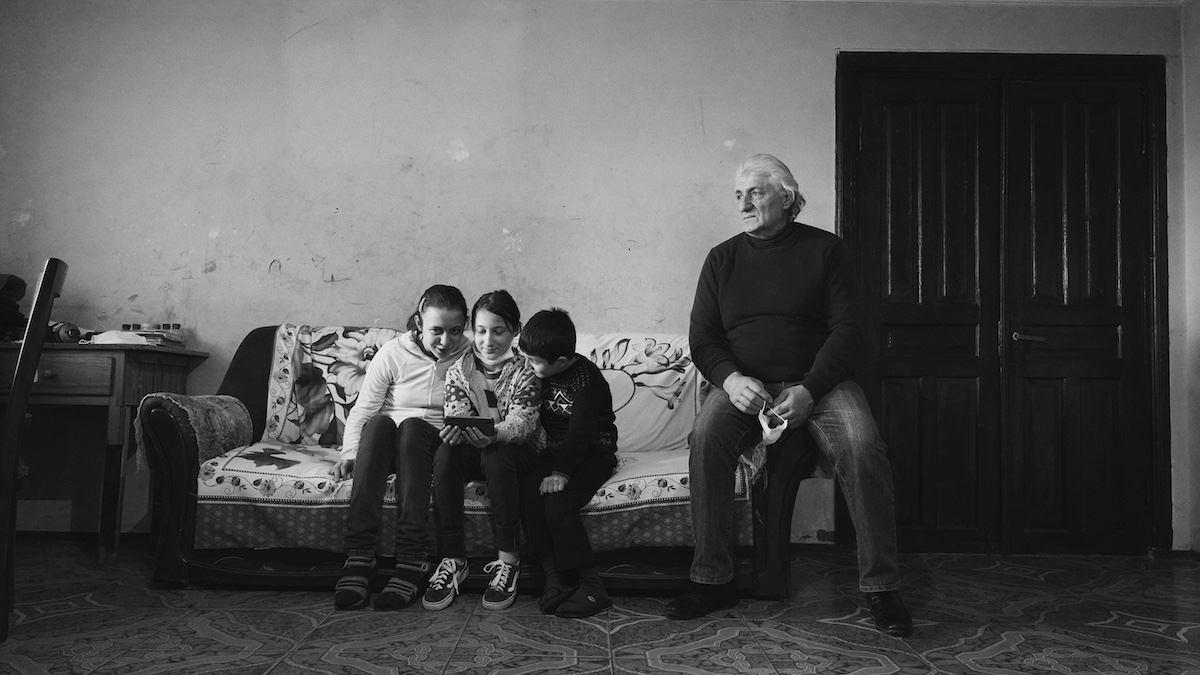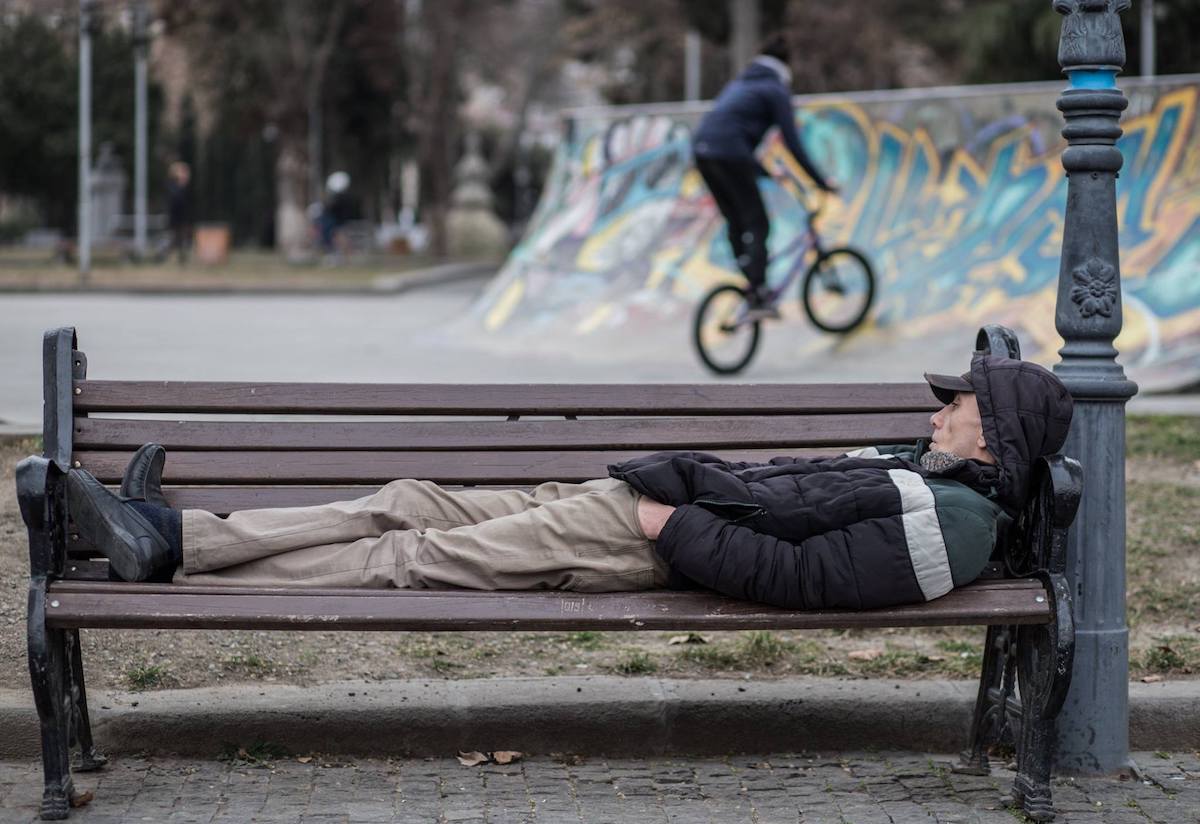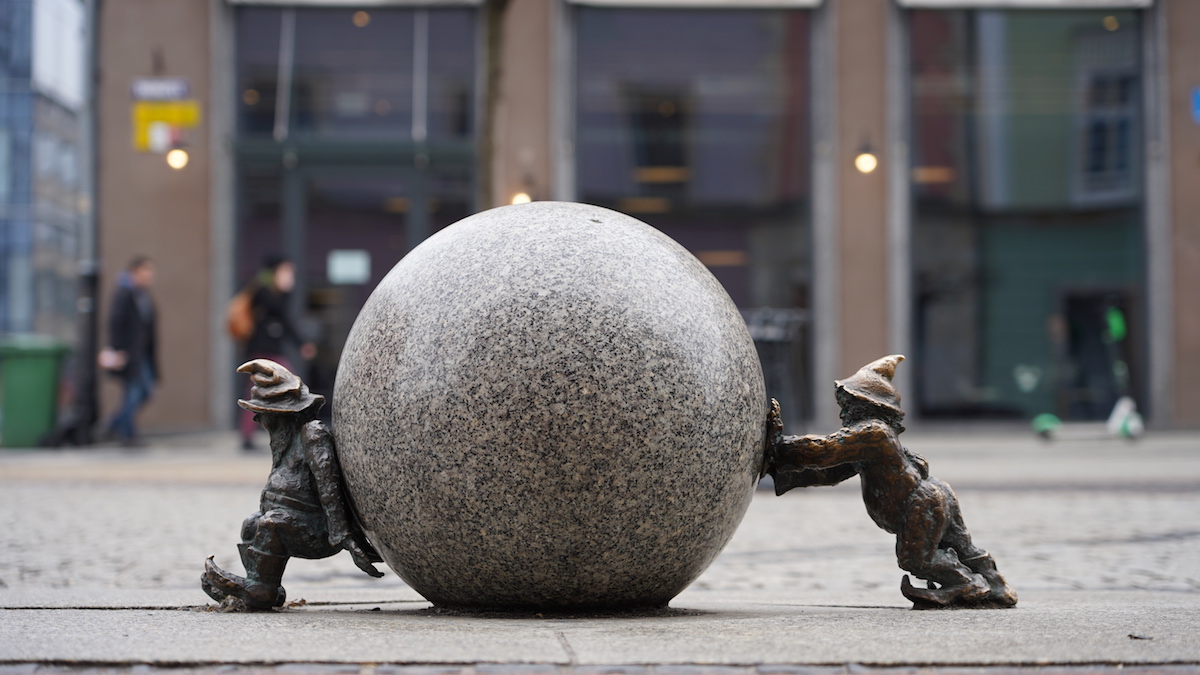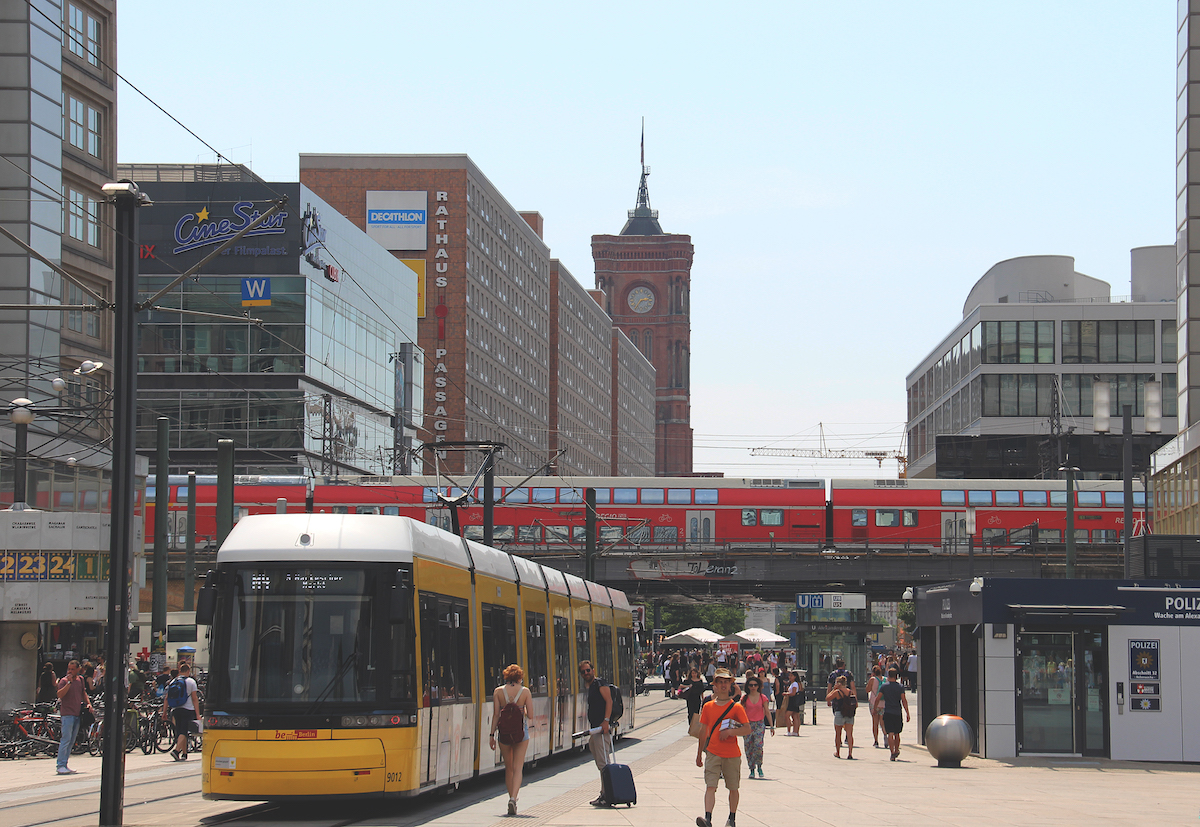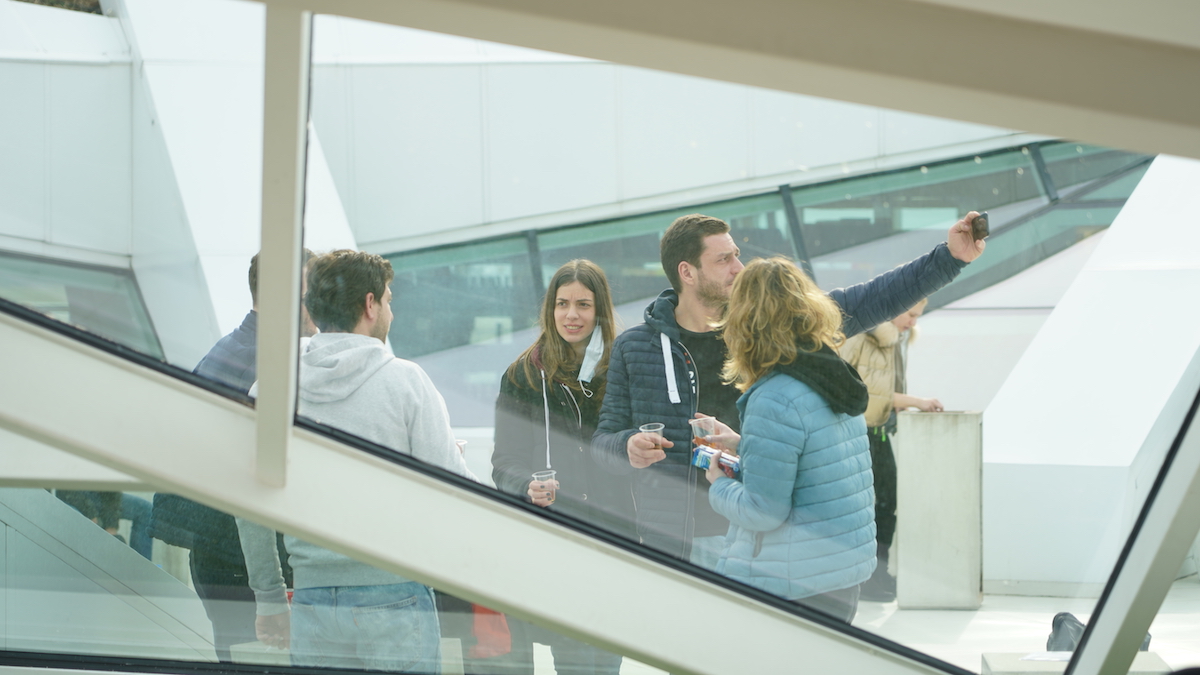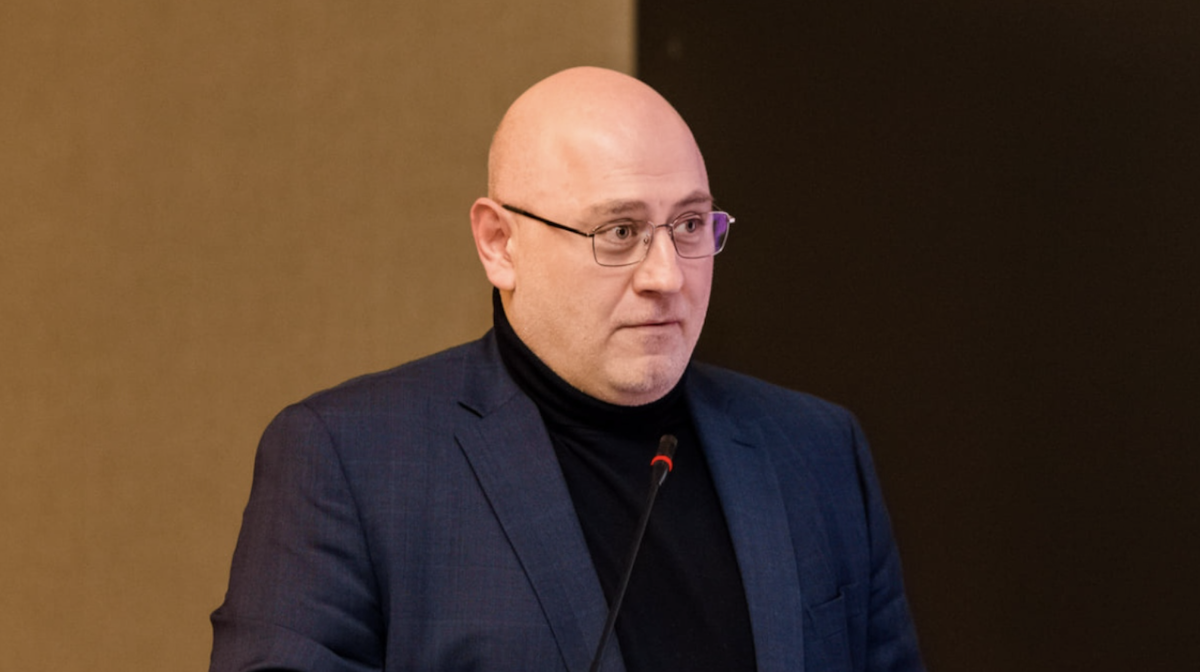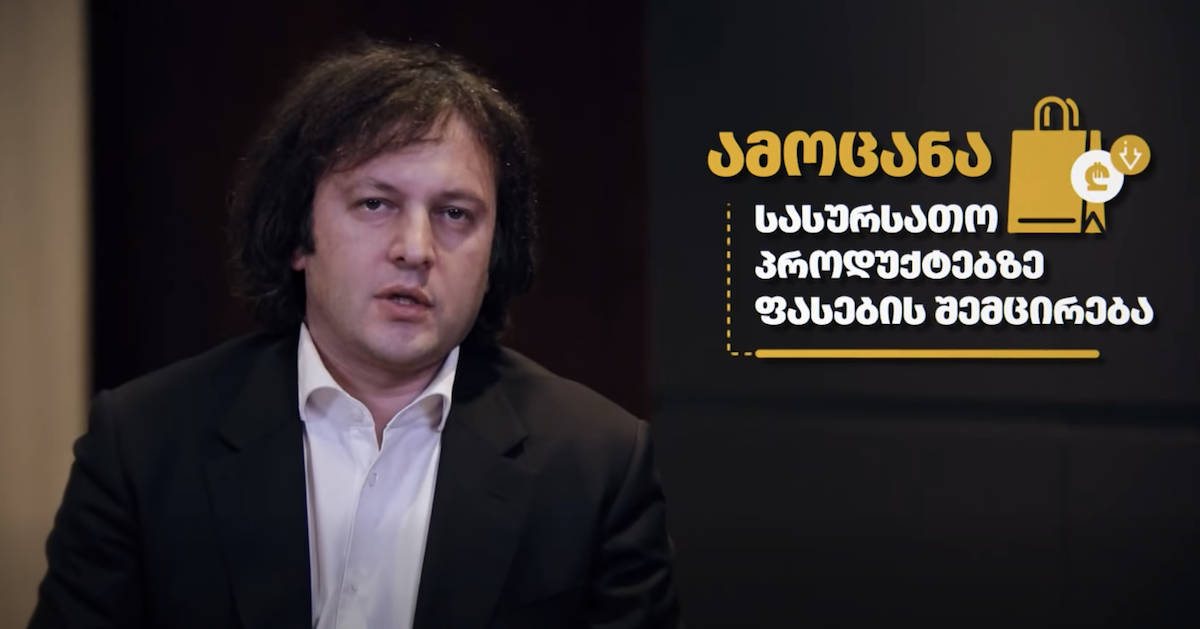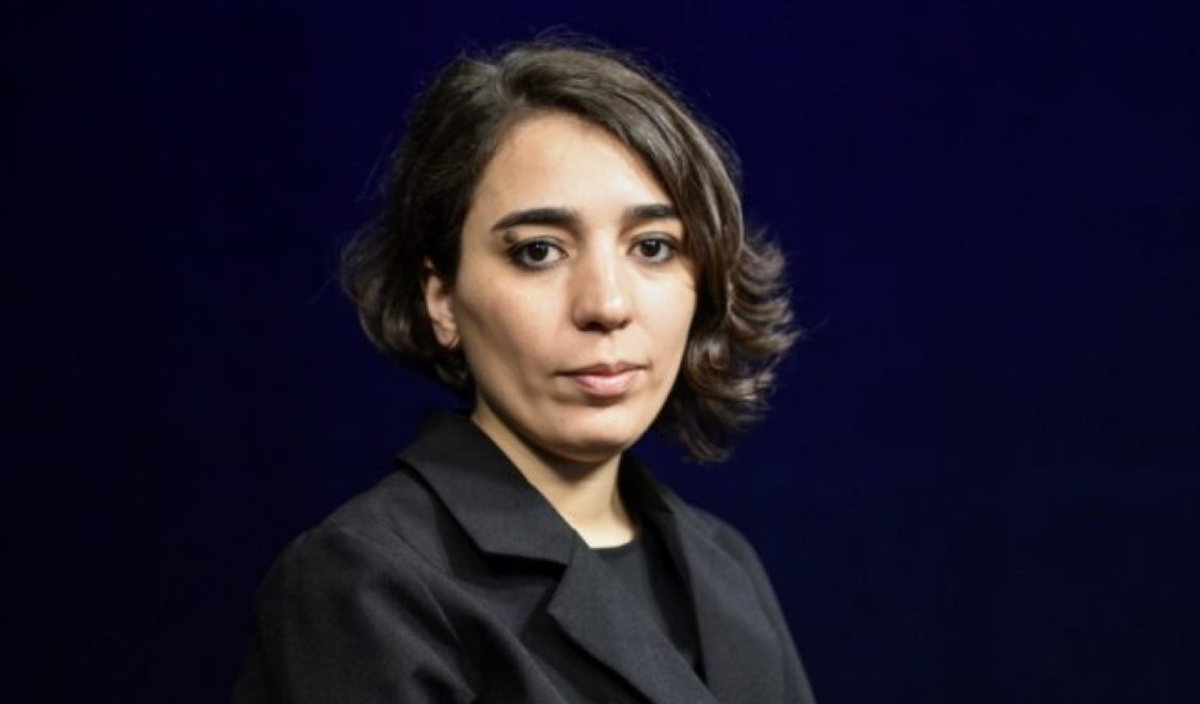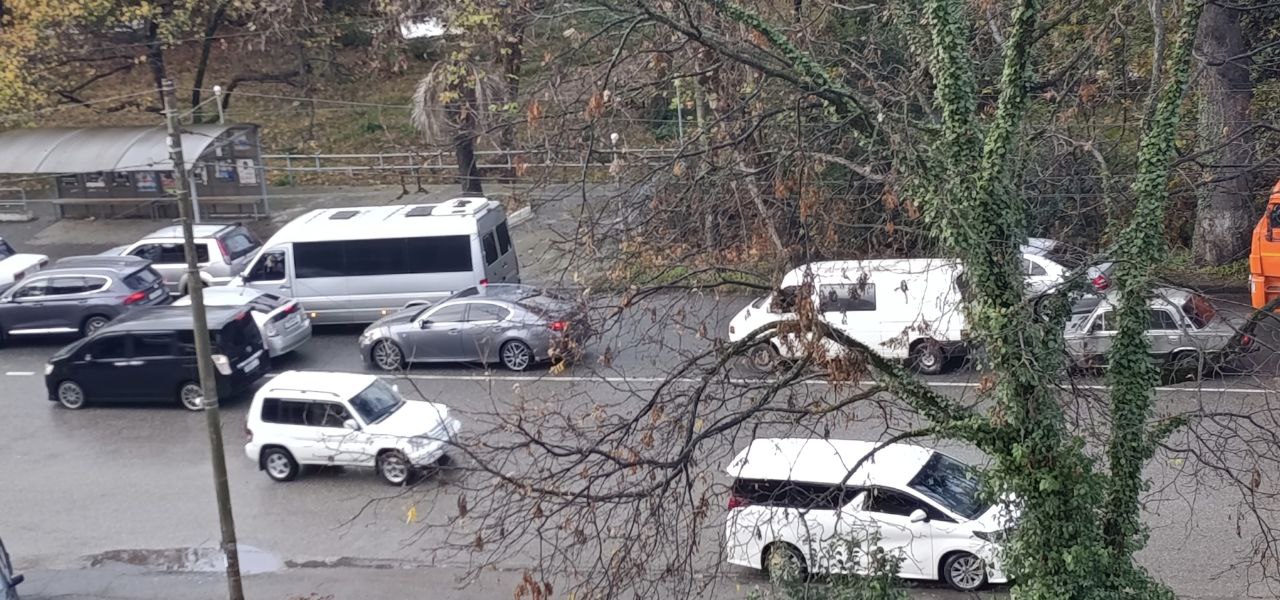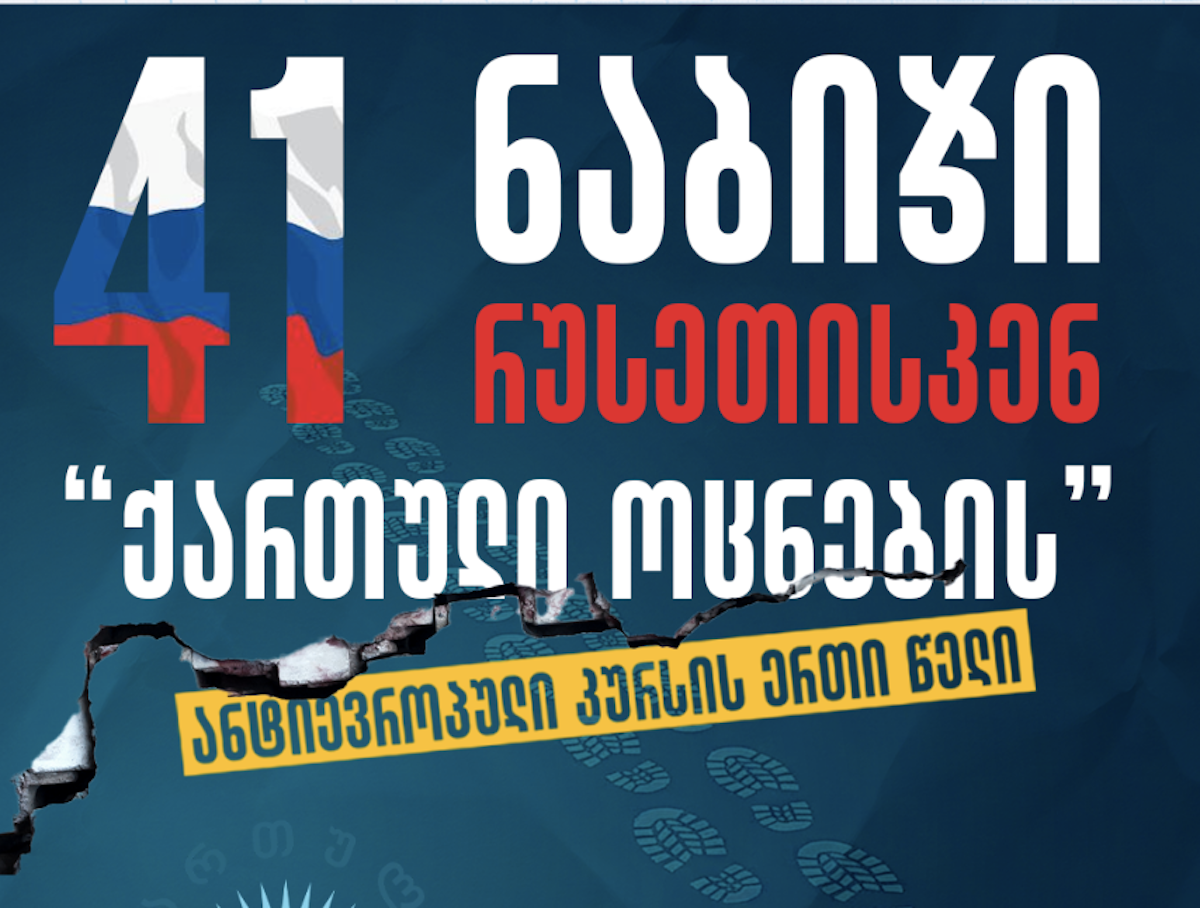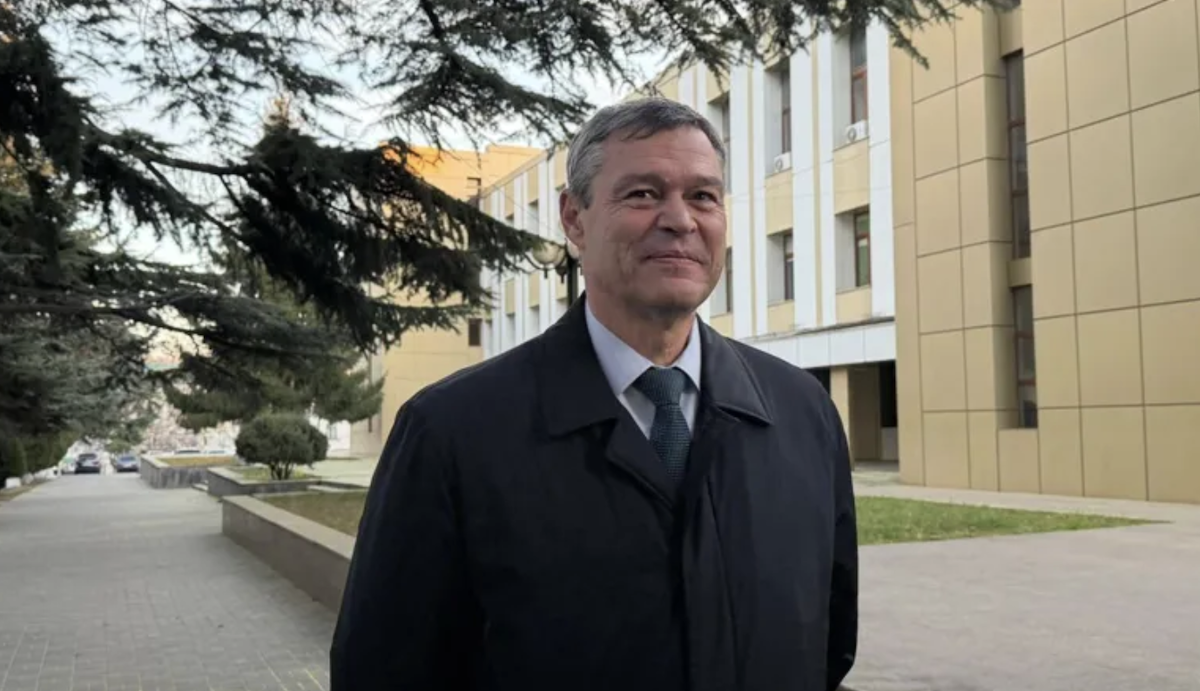To America through Mexico - where, how, and why Georgian citizens are leaving
From Georgia to America via Mexico
For about half a year, thousands of Georgian citizens have been illegally crossing the US-Mexico border and surrendering to American border guards.
Their journey to America is difficult, long, risky and expensive. They pay an average of $15,000 to $20,000 to survive immigration jails, hunger, cold, insecurity and fear, just to sneak into the US and start a new life there.
Getting to the US through Mexico is a relatively new direction for Georgian labor migration, but now one of the most frequent. People of all sexes and ages travel, even with families – pregnant wives and small children.
They spend variable amounts of time on the road. Some complete it in two weeks, others several months.
In recent months, many former employees of public services such as the police and customs have been traveling to the United States this way. Among them are those who held relatively high positions.
JAMnews explores why people are fleeing Georgia, what route illegal Georgian migrants take and what they find in the America of their dreams.
“The pay is low, you work a lot, they oppress you” – what the inhabitants of Georgia are fleeing from
Tatia [named changed], 36, works as an assistant to an elderly woman in a family in New Jersey. She cooks dinners, takes the woman for walks, brings her shopping. She works 24 hours a day and earns $180 a day. Tatia has only two days off a month.
Tatia is a lawyer by profession. She worked for eleven years in Georgia in the civil service. She says working in Georgia has become more difficult lately:
“The pay is low, you work a lot, they oppress you. You studied, graduated, you know your business, and suddenly they can bring and promote a person who knows Georgian poorly, let alone English. For example, my boss hired a waitress and gave her higher pay than me.”
Tatia left her job in 2019. At first she tried to be her own boss – she opened a catering business in Tbilisi. The home delivery service worked well during the pandemic, but of course afterward there were fewer customers, and Tatia could no longer afford her expenses and closed the restaurant.
- Armenia may face depopulation amid demographic problems and labor migration
- ‘Not enemies’ – how Georgia welcomes emigrants from Russia and Belarus
- Lithuania struggles to cope with the influx of illegal migrants from Belarus
Tatia began to think about emigrating to the United States. The legal way to get there from Georgia is to get a visa or a green card. Getting a visa is difficult. And winning green card lottery is so quite rare.
Tatia had only one way out – the illegal way:
“At the end of January, I accidentally found out that you can get to America through Mexico. My cousin did this. I also started thinking about getting there.”
Mexico, which has a 3141-kilometer border with the United States, has become a hub for illegal migrants from all over the world. Those who cannot enter the US legally try to get there through Mexican border towns. They arrive at a border town in Mexico, then at the Mexican-American border, they turn themselves in to the US border patrol.
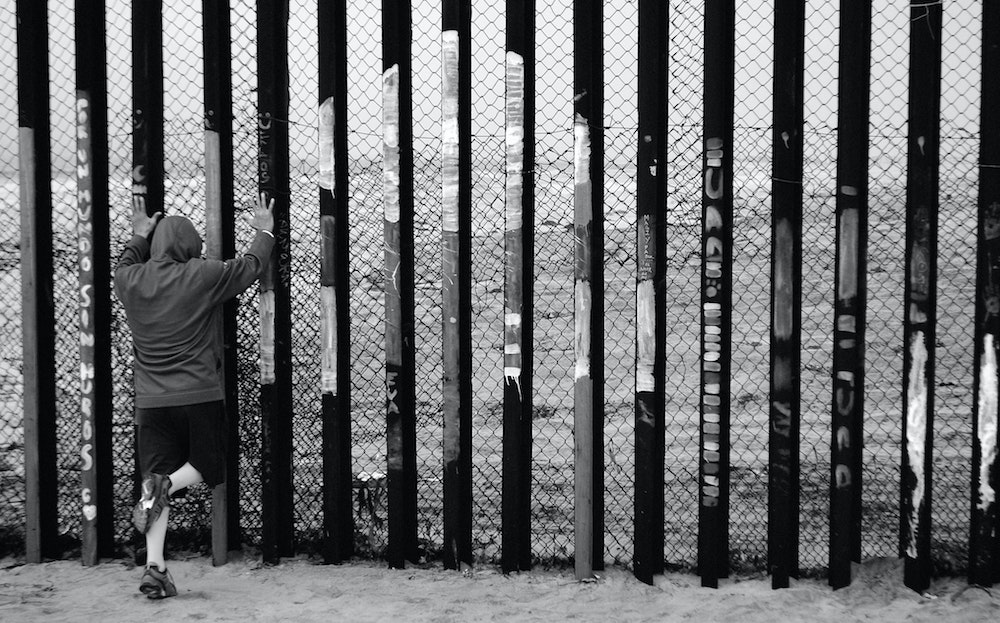
In fiscal 2021 (which covers the period from October 1 of the previous year to September 30, 2021), the US Border Patrol detained 1.6 million migrants at the US-Mexico border. This is almost four times higher than the previous fiscal year 2019. In 2022, the incomplete figure was already 1.8 million.
According to the Pew Research Center, in 2021 only 37% of people who illegally crossed the Mexican border were Mexican citizens. This year, the proportion of countries that have not historically participated in migration has increased.
Among them are post-Soviet countries, including Georgia.
How to get to Mexico?
It is difficult for Georgian citizens to enter Mexico. There are two ways to enter the country legally – obtain a Mexican visa or a category D work visa from a Schengen country.
There is no Mexican consulate in Georgia. Anyone trying to obtain a visa fills out an application online and goes to an interview in Turkey. Recently Mexico has made the issuance of visas more complicated. So most migrants do not even bother with this method.
Getting to Mexico is much easier with a category D European visa. Poland is the most popular country in this regard, as it willingly issues visas to Georgian labor migrants. But it takes a very long time.
Tatia contacted a travel agency in Tbilisi, who offered her a Polish visa for 300 euros – the agency would find an employer in Poland, make an invitation and fill out an application at the embassy.
The Embassy of Poland considers applications on the lottery principle held every Saturday. Some wait their turn for months. Tatia was lucky – she “won” in the second week of waiting.
Arriving at the consulate, Tatia already knew what to answer if she were questioned in detail. She knew that she had a fake job offer from a supermarket, knew where she would live, what her salary would be, where the store was located, and so on.
The interview was April 19th. Within a week, Tatiya received a category D visa to Poland.
Step two – finding a “coyote”
A single mother of two, 33-year-old Maya from Zugdidi decided to leave because of her difficult social situation. A salary of 1,500 lari [about $500], which Maya received as a loan officer at a bank was not enough for anything. Maya, along with two friends, decided to go to America. Several times they applied for a visa, but to no avail. So they chose the illegal route.
Maya paid $250 for a Polish visa. She received a category D visa as a courier for a private company with a salary of 15 złoty [about $3.3] per hour. After that, Maya began to look for a guide.
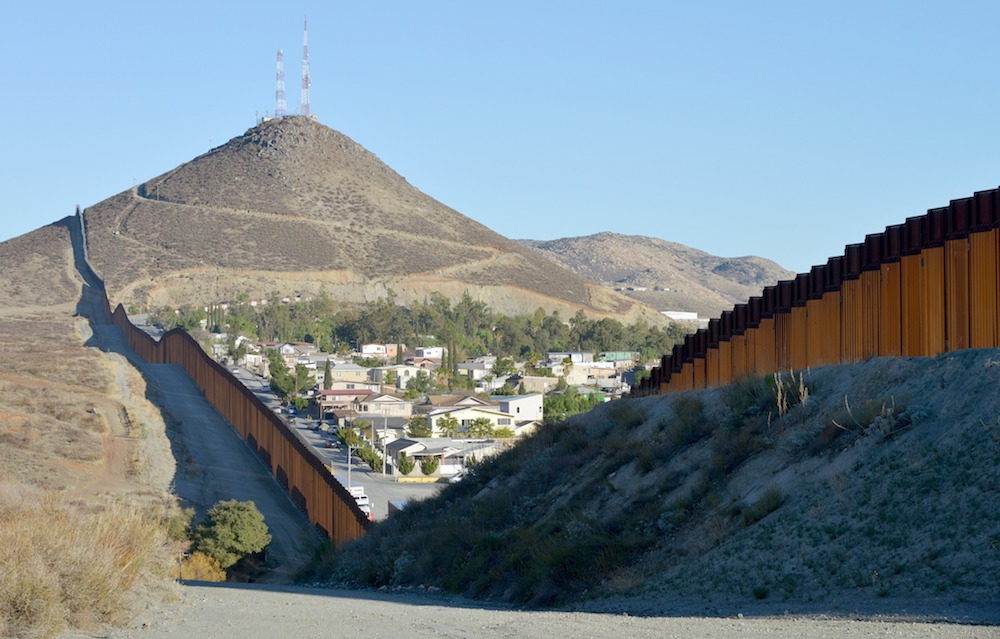
“Coyotes” are people who deliver illegal migrants to the border between Mexico and the United States. For this service they receive from $10-15,000. This amount includes the organization of entry into Mexico and arrival at the US border. Unforeseen expenses are mainly paid by migrants themselves.
Coyotes are people of different nationalities and can be found in different social networks.
Both Tatia and Maya found guides from Tbilisi. Tatia agreed on $12,000 and Maya on $8,000.
From Europe to Mexico
Georgian migrants choose different European cities to reach Mexico. Here, too, everyone arrives in different cities and chooses different routes, but everyone ends up in a border town. The final stop of our protagonists was Mexicali, a city in northern Mexico.
The path from Europe to Mexico is difficult and risky. Some migrants are lucky, some end up in Mexican prisons.
Maya was advised to fly to Mexico from Paris.
Maya and her two friends stayed in Paris for four days. The day before departure, wtheye learned that there was a problem at the border – border guards bribed by the coyote were arrested. The flight was canceled, the tickets were lost.
A week later they bought tickets again, went through registration, and when boarding began Maya and her friends were not allowed on the plane.
“We were told that several countries had banned flights to Mexico on a D visa, and one of them was France. We met other Georgians, they had the same facilitator and had run into the same problem. We were all stuck.”
Maya and her friends lost money on the second ticket. Added to this was the cost of living in Paris. They suggested that the coyote, who was to be paid $8,000 upon arrival in Mexico, deduct these expenses from the fee. The man was angry and refused to help them. The girls were left in Paris without a contact.
In a few days they found a new guide on social networks. They agreed on $7,000. They were advised to fly via Amsterdam.
Maya and her friends flew from Paris first to Amsterdam and then to Mexico City. Here new problems began.
Maya and her friends went through passport control together:
“I was somehow lucky. I went through passport control, but soon after, the same border guard saw the second Georgian passport and we were both arrested and transferred to the immigration service. We were there for 24 hours, we did not know what awaited us, where we were, whether we would be deported or arrested. After so many problems, we were shocked and stressed.”
Both were returned to Amsterdam a day later.
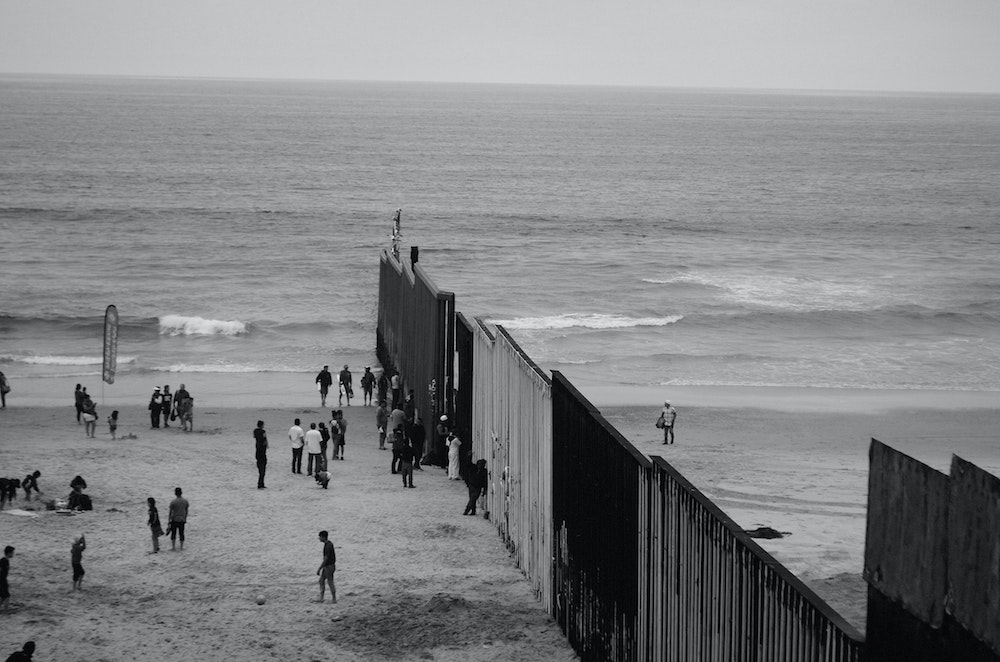
After that, on the advice of the guide, the girls split up and for the third time tried to fly to Mexico – separately and to different cities.
This time all three succeeded. Maya hit a snag – her passport already had a Mexican stamp. Maya was brought in for interrogation:
“They asked me about everything. Where and why am I going, why do I have a stamp in my passport, why was I denied an American visa. I was lucky that I knew the language and answered everything. I convinced them that I was a tourist, showed them photos to prove how much I traveled. I told them that my friends were vacationing in Cancun [Mexican resort town – JAMnews] and I wanted to celebrate the New Year with them. I made up the whole story. They signed some document and released me after forty minutes.”
This document was permission to stay in Mexico for 90 days.
In a Mexican prison
Tatia flew to Mexico from Madrid, first to Mexico City and then to Mexicali. Out of her group of 21, four were immediately sent to a Mexican immigration prison:
“There were no more tickets for these four members of our group. they flew separately, and their flight was delayed. By the time they arrived in Mexico City, the corrupt border guards had already been replaced. All four were arrested and brought to immigration jail. There were terrible conditions – dirt, terrible food, cockroaches. Everything is taken away from you, you have no way to contact your family.”
To help the group members, Tatiya contacted the guide. It took “Tom” a week to get them out of prison. Tatia doesn’t know how he did it.
From prison, all four were transferred to someone’s private home in another city in Mexico. Tatia’s friend recalled that the owner had a dangerous look, like mafioso. They slept in a shed out in the yard.
A week later they tried to fly to Tijuana, a border city in northwestern Mexico, but were again arrested:
“One of the four girls entered the prison with dark hair and came out with gray hair. They were afraid, they felt very bad, they wanted to go back to Georgia. But they still tried and on the third try they succeeded, they got to Cancun.”
Tatia says that, despite these troubles, her friends are still lucky. At the border wall with America, she met many who had spent much longer in immigration prison. A friend of hers has been in one of the prisons in such a prison for over a month and a half.
Sinking in the ocean
There are many legends about how to get to America through Mexico, disseminated on social networks where people write their stories. They ask how they can get to America, how reliable is this or that guide?
One writes that his relative is in prison and it’s been impossible to get through to him for weeks. They ask how they managed to move with a pregnant wife and small children.
Mostly they write in the Latin alphabet, from fake profiles with assumed names. Many are aggressive and swear in the comments.
Many people write that the coyotes actually lie and take money from illegal immigrants for nothing, that the trip can be made without them.
This is the story of a JAMnews respondents, 36-year-old Mamuka Tadiashvili, who tried to get to America in a different way.
Mamuka studied in the cadet corps from the age of 15, then served in the army. He also participated in the August 2008 war. In 2010 he was fired from the army due to a car accident. At that time Mamuka’s family was in poverty and had large debts. The apartment and everything that could be was sold. Mamuka went to work in Turkey, but this also proved untenable.
In April 2021 he returned to Georgia:
“But here I found the situation worse – salaries are 300-500 lari [about $100-175]. I realized that there was nothing I could do here.”
In the meantime he got married, and so expenses increased. Mamuka began to think about moving to America. With the help of family members he took out a loan, collected about $13,000 and began to look for a guide.
Mamuka obtained a Polish visa and flew to Barcelona. The coyote advised him what to wear, which terminal to enter. But he decided to buy a ticket for another flight:
“I’ve heard all along that the guides don’t really do anything. And I decided to go myself. I was losing money on one ticket, nothing else, and with luck I wouldn’t have to pay the guide $8,000. The next day I bought a Barcelona-Lisbon-Cancun ticket and set off.”
At the Cancun airport, a man wearing glasses approached Mamuka and led him to the check-in counter. Mamuka saw a border guard looking for his passport details and photos in a WhatsApp chat. Mamuka was brought in for questioning, arrested, and returned to Spain the next day.
“In the immigration prison where I spent several hours, the conditions were something I never want to see again. I had to look for another way. I remembered that you can get to the USA from the Bahamas. I was there in 2015. I started looking for a new guide in the Bahamas.” The Bahamas is an English-speaking island nation located southeast of the US state of Florida.
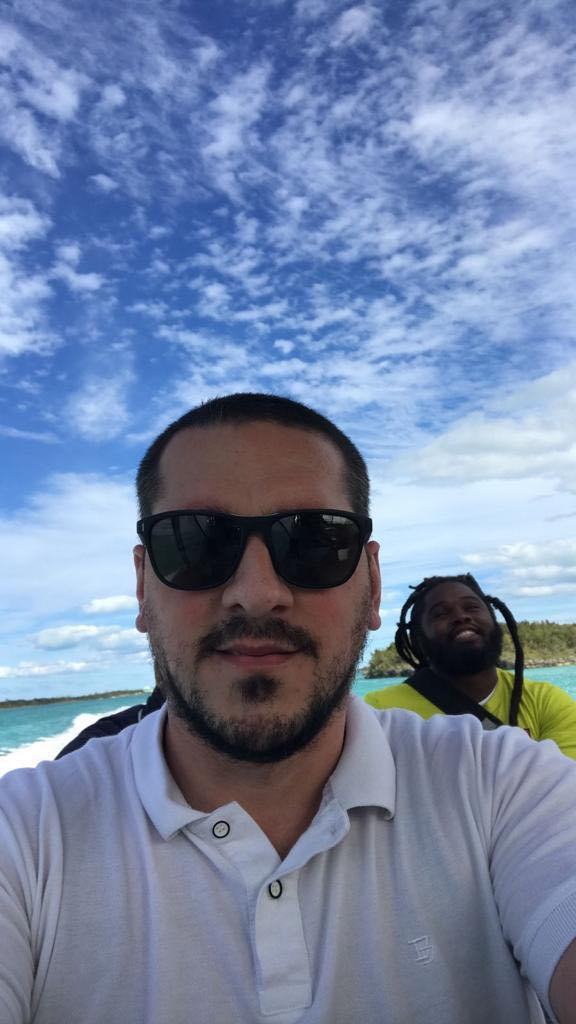
These were the last days of January. The new guide wanted $7,000 and promised to transport him from the Bahamas to the United States on February 1. Mamuka flew to Abaco (a region of the Bahamas) and met with the guide.
He first placed Mamuka in a hotel, then moved him somewhere to a house where about thirty people lived. There, Mamuka gradually discovered that these people had been waiting for months to move on. He knew that something was wrong, but he had no way back.
Each day the guide came up with a plausible reason why he could not be transported on that particular day. He showed how the immigration service patrolled, said that the day before they had arrested boats for transporting drugs, strengthened security, etc.
On the ninth day the group was brought out of the house to a remote location. From there they were to travel to America by boat. As soon as the boat appeared near the shore, the guide took the first half of the money from Mamuka. The members of the group were dressed in vests and put into a boat. After that, the guide asked for the rest of the money. Mamuka, already convinced that he would be in America in two hours, paid this sum as well. The boat set sail.
“As soon as we went out into the ocean, the driver started drinking. For several hours he drove us along the coast while getting drunk. The women were hysterical. I realized that we had been deceived. He took us somewhere in the middle of the night and dropped us off. He told us we were in America. In the meantime I studied the map well, and this place did not look like America.”
And so it was. The group had been tricked and brought back to Abaco after several hours on the ocean.
So the group had been deceived for three months. Mamuka had no more money and nowhere to go. Meanwhile, he explored the area and decided to buy a boat and sail to America himself. Meanwhile his wife, five months pregnant, and his wife’s cousin’s family (a young couple with two small children) also decided to move to America in this way.
They all came to Mamuka, bought a boat for $13,000, navigation equipment and gasoline for $2,000, and sailed out onto the ocean at night. The boat was piloted by a relative of Mamuka’s who did not follow the route that Mamuka had drawn on his map, so instead of four hours, the route would take eight hours.
Meanwhile, the water in the radiator boiled, the waves intensified, the heat and salt water became unbearable. Suddenly, in the middle of the ocean, the boat stopped: the engine was dead. The waves intensified, the boat began to fill with water. The men could not bail fast enough. The women and children were terrified. In the end, the boat capsized and sank.
All except Mamuka were wearing vests. Mamuka says that he does not remember how long he waved his arms and how he got on the bow of the boat, which remained above the waterline:
“At a time like this, a minute feels like a century. I thought it was all over. Suddenly, a red boat sailed from somewhere and took us all away. We were wrapped in blankets. We didn’t have anything left, we were left with the clothes we were wearing and the passports that my wife’s relative had in a bag.”
The boat was American. Mamuka lied that they were Ukrainians and asked to be brought to America. But the lies didn’t work. In the Bahamas, immigration was already waiting for them. They were all arrested and brought to immigration jail.
Two weeks later some of Mamuka’s relatives collected the money needed for return tickets, about $8,000, and flew to Georgia.

Mamuka and his wife needed $3,500; another week passed before this amount was collected. Mamuka and his wife were in immigration jail at the time.
“My wife and I were separated by one “grid”. The conditions were dangerous. We sat by this fence all night long and talked so that she would not be afraid.”
On the day of departure, Mamuka and his pregnant wife were brought to the airport by the immigration service. At first glance everything was fine, but the couple was not allowed on board.
The policemen shrugged. Mamuka and his wife returned to prison. The tickets had been cancelled.
“Before the consulate found out about this story, I had to first get money for tickets. I no longer had anyone in Georgia to whom I did not owe money and from whom I could ask even for a dollar. I paid for my wife’s ticket, and this time she flew out.”
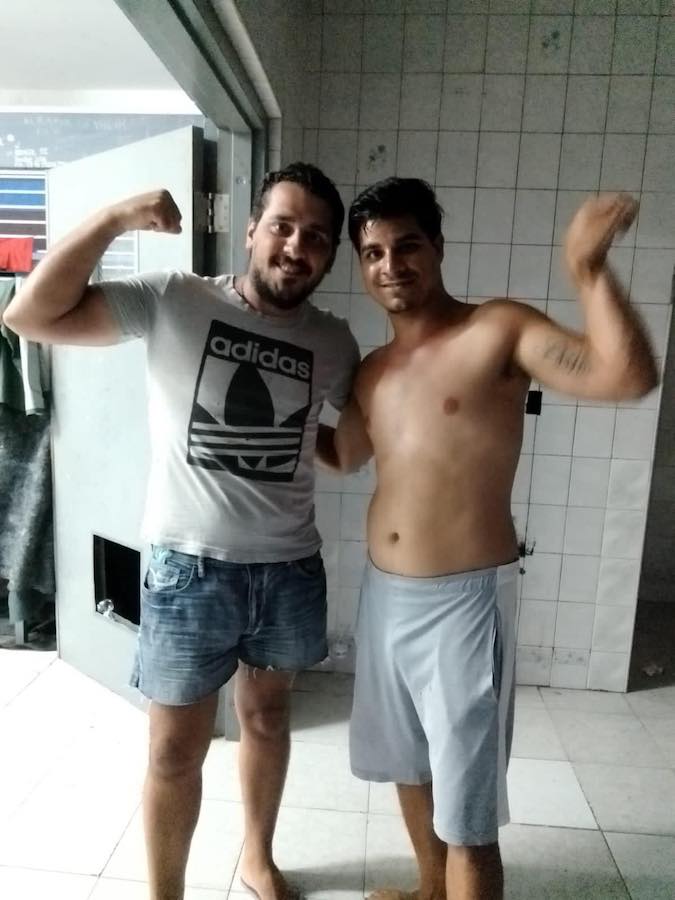
Mamuka spent more than a month in prison in the Bahamas. In the end, his friend pawned a car and sent Mamuka money for a ticket.
Mamuka, who left Georgia at the end of January, returned to Georgia on April 17, wearing only shorts, a t-shirt donated by a Cuban neighbor in prison, and a debt of $30,000.
From Mexico to the USA
Those who, unlike Mamuka, were lucky enough to end up in Mexico, begin to prepare for their journey to the United States.
In Mexican cities, illegal migrants stay in hotels booked by coyotes. Often even the taxi drivers who bring them to these hotels are connected to the police.
Arriving in Mexico, Tatia knew that there was a lot of corruption and that bribes would be demanded at every step:
“As soon as we got into the taxi, I told the driver that we were tourists, and if he took us in the next few days he could earn money. It was a young guy. I told him that I love clubs and if he knew a good club somewhere, let’s go together in the evening. It worked. He started to “warm up” to me, I played along; it was a way to escape.”
Tatia’s group made it safely to the hotel. The rest of the group, in other taxis, paid the police $300-$400 at each post. Otherwise they were threatened with jail.
The same continued at the hotel:
“Every hour a guy came to us and said that we had to pay money, otherwise he would turn us over to the police.”
Tatia and Maya’s last stop before the American border was Mexicali. From there, only the last stage remained – to reach the American border. The wall.
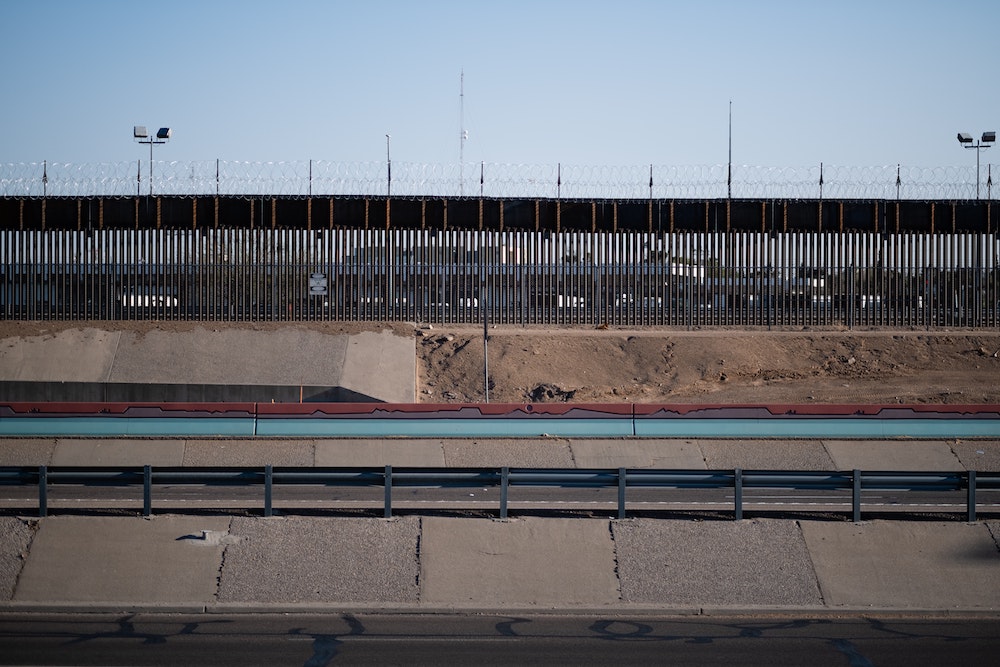
Tatia’s group stayed at the hotel for several hours:
“In the evening, young guys arrived in sports cars, put us in, and we drove at high speed. I got scared, asked them to slow down, they told me that they had to take us to the place before the police arrived.”
After about an hour and a half, the cars stopped and the passengers were ordered to move quickly:
“It was midnight. They actually kicked us out, telling us to run. We had to run across the desert to reach some trees. We ran across the sand, even the men were crying they were so scared. Near these trees we saw a river; one of us checked the depth with a branch, it was not deep and we waded in. We came out of the river wet, didn’t know how to get to the wall, nothing was visible. We were led by an Uzbek family, we followed them. When we got to the wall, everyone was crying.”
Tatia’s group was lucky. Some migrants have to cross the desert for five or six hours. Or they are planted near the river in a place where the water is deeper. Maya and her friends walked through the desert at night for five hours.
Prison in the USA: “I thought about how to chew my veins”
At the American frontier, emotions are mixed. Joy is mixed with the terror of uncertainty. Tatia had the most trouble at the American border. She thought about committing suicide or turning back.
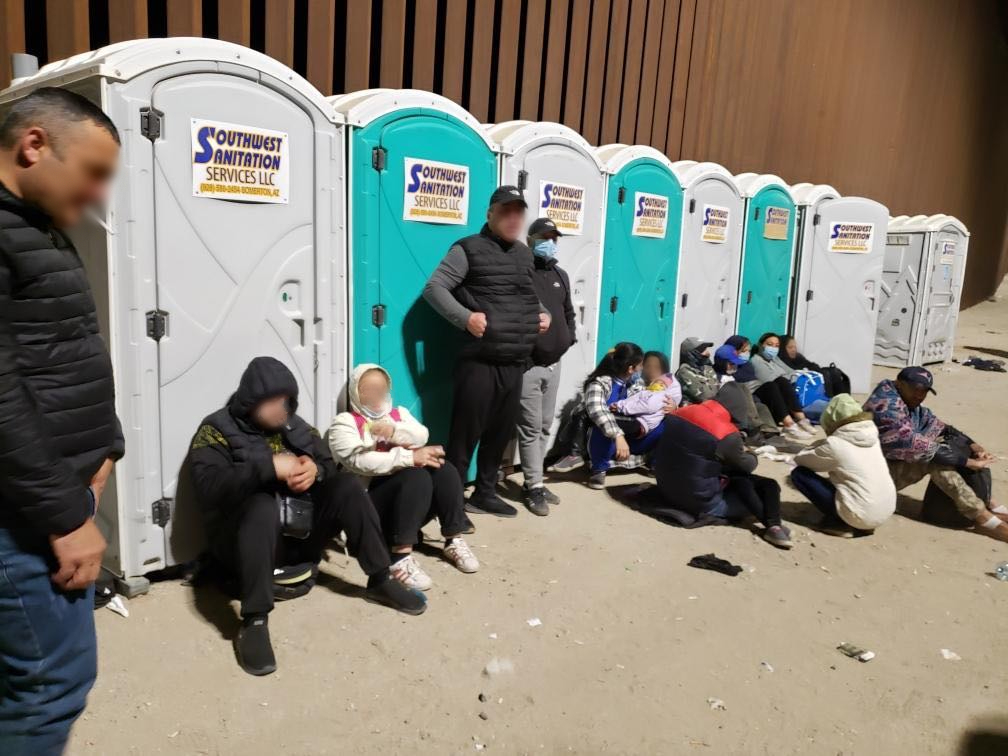
After surrendering to the US border patrol, migrants are placed in a so-called detention cell. Anyone who illegally crosses the American border is taken into custody.
Conditions in detention are unbearable. Some are there for a week, some for a month or more.
Before reaching an isolation cell, border guards search illegal migrants and take everything – clothes, medicines, food. People are left with one set of clothes, just what they are wearing. They leave documents, phones and money – they put everything in one bag and seal it:
“They removed all the laces from hoodies, jackets and shoes. I had an allergy medicine, it was thrown away. We were brought somewhere, some kind of camp, a tent made of large structures. We were placed in a waiting room and given foil blankets to protect us from the cold. Then I realized they took the laces so you do not harm yourself,” Tatia says.
There are thousands of migrants from different countries in the tent. The migrants, wrapped in foil blankets, lie on dirty mattresses on the floor. There are also toilets.
“I knew it would be difficult, but I didn’t expect that. I cried, went to the officer and begged, said that I wanted to return to my country. I felt like a total nonentity. I don’t know, I don’t even want to remember, I feel sorry for myself,” Tatia says.
Migrants from detention are brought by bus to immigration prisons. Their trials are held there.
Tatia spent four days at “Detenshen”. On the fifth day she was transferred to a prison in Phoenix, Arizona. There she was met with the worst conditions:
“About 80 people gathered on about 20 square meters. There were two toilets. We were very thirsty, and when we asked the officer, he said you can drink from the toilet. Me and a Georgian girl from Kutaisi, whom I met there, ended up next to the toilet. Imagine, everyone coming and doing their business above your head. But you can’t move, you can’t go anywhere.”
Tatia spent four days in the Phoenix prison. She did not eat anything during this time:
“I thought about how to chew through my veins with my teeth. I was very ill. I was in the land of my dreams and I was so stressed and devastated that I didn’t want anything else. I thought about returning. There you feel that you are nobody, nothing, alone.
“Battle for Survival”: How America welcomes migrants
In immigration prisons, migrants are fingerprinted, their cases filed, assigned a special number and asked if they have a sponsor in America.
A sponsor is a person living in America who takes some of the responsibility for migrants. The presence of a sponsor means that the migrant has a place to stay and will not end up on the street.
Some find such sponsors in a special group. Some are helped by a relative living in America. Sponsors receive between $2,000 and $3,500. Their duty is to confirm that they are ready to accept a particular person when they receive a call from the immigration prison. It is clear that this is a formality. As a rule, migrants do not live with such sponsors.
Tatia and Maya had friends living in America.
In immigration jail, people say they have fled their country and request asylum.
Ekaterina Egutia is an immigration lawyer who has lived in New York for many years. According to her, when an immigrant seeks asylum in an immigration prison, their deportation is suspended and the court proceeds to consider an asylum case. The asylum seeker is given the right to work while their case is pending before the court.

Most of them are driven from the immigration office to the Red Cross hotel. Migrants who have had extreme difficulty are settled there, given clothes and food. Previously they were also given tickets to wherever they wished to go. Now migrants themselves must buy their tickets.
In some cases the migrant must wear a tracking bracelet; this happened to Maya’s friend. A migrant wearing a wristband can only travel within 70 miles of the sponsor’s address where they are to live.
Maya doesn’t know why her friend was wearing a bracelet. And because of this, they were forced to move from Arizona to Chicago, to her sponsor.
At the Chicago immigration office they reported that they wanted to move to New York, and received permission. The immigration service removed the bracelet from Maya’s friend, but downloaded a special program on her phone. Now she periodically sends selfies to this service to confirm her location.
This will continue until her case is completed. When this will happen, no one knows.
Illegals who reach America need a few days to recover. If someone is met by acquaintances, it is a little easier for them to adapt. For those who do not have acquaintances and do not know the language, it is of course much more difficult.
There are dozens of posts in groups on social networks that people are on the street and have nowhere to stay.
It was hard for Maya to find a job. For about two months she put her documents in order and made ends meet with part-time jobs. Jobs for newcomers are offered by those who want to relax for a few days and are looking for a replacement. They pay them out of their own wages.
Now she has a stable job – she takes care of an elderly man in New Jersey. During a video interview, Maya was interrupted by the man several times. Maya apologizes, runs to the second floor and brings him ice cold water. She says that she was lucky because she found a good family. She works 24/7, but she needs it to get on her feet. Her pay is $200 a day.
“In America the real battle begins: the battle for survival,” says Tatia.
Tatia knew that starting from scratch in a foreign city would not be easy:
“I have been here for three months and often thought that I would just leave. They told me back home not to be so nervous. They say we’ll buy you a ticket; but no, I can’t go back. When you start working, you get a little better. You can work for seventeen hours, but you know you’ll earn more than 50-100 lari.”
Now Tatia also lives in New Jersey and works as an assistant to an elderly woman. Her salary is $180 a day. After getting this job, Tatia paid her entire salary for the first month to the agent who found her this job.
The difference between the working conditions of legal and illegal immigrants is huge. Illegals are paid less. So those who arrive illegally must both work and resolve their status.
Most hire a lawyer to eventually get political asylum. According to Ekaterina Egutia, asylum in America is requested for the following reasons: political, belonging to a social group (LGBT, etc.), or persecution on national, racial or religious grounds.
“If the court decides to grant asylum, the immigrant is granted the appropriate status and a green card after a certain period of time.”
Proceedings in immigration court can take several years. If they don’t get asylum, they are deported.
Unlike Europe, deportation in America does not mean that a person is brought directly from the court to the airport. Migrants remain in the country, but still without status and at great risk.
Maya’s first trial is scheduled for September 2023. Maya’s claim is domestic violence. Tatia’s claim is purely political, based on her previous work. With litigation ahead, they refused to discuss details.
“Migrants have become much younger. This is a national disaster.”
“There has never been such a large-scale outflow of people from Georgia. It’s very worrying,” says Giorgi Badridze, researcher at the Rondeli Foundation and a diplomat who was Georgia’s ambassador to the UK from 2009-2013.
According to Badridze, the age of migrants is significant. Mostly it’s twenty- and thirty-somethings who leave the country. While before this age group went to study in the West, now they go to the US illegally to work.
“Along with the occupation, this is the biggest national threat. This can have catastrophic consequences – the future of the country is gone, people are fleeing, they are disappointed. This is a very serious problem.”
Despite such a flow of migration, the Georgian government never touches on this topic either officially, or at government briefings, or in conversations with journalists. Against the background of the fact that even officials choose this path, everyone knows everything very well.
On the contrary, in the official media, the country’s prime minister is proud that the country is growing economically and that Georgia is a leader in the region.
“This is an ideal situation for an oligarchic regime – the fewer people in the country, the easier it is to maintain the regime. Therefore, it is natural that the authorities do not notice this, on the contrary, it suits them,” says Badridze.
“Coming here is like giving birth to a child. You forget your suffering.”
Maya and Tatia have families and children in Georgia. None of them, despite the difficulties they experience in America, is going to return to Georgia. They say they see no future there.
“Coming here is like giving birth to a child, you quickly forget about the suffering you experienced. I really wanted to leave the country; I felt so bad, I was so unhappy and I will never return,” Tatia says.
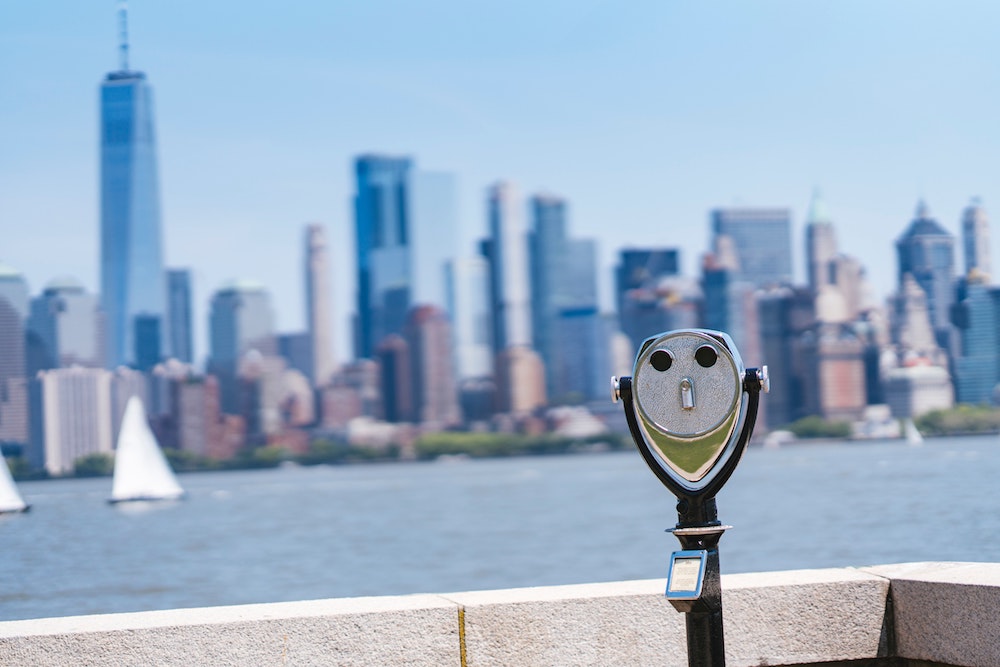
Moreover, both of them plan to bring their children over in the future. But not through Mexico.
Despite four months of suffering and huge debts, Mamuka did not stay in Georgia either. Shortly after his return, he took the last extreme step – he took out a loan on his grandmother’s pension and left for Israel. He had nothing to lose.
Now Mamuka is in Israel. He works three jobs and earns $270 a day. He lives at one of his jobs to save money on an apartment.
His daughter Sofia was born in Georgia. Mamuka hopes that this terrible story will not affect little Sophia in any way.
Mamuka plans to stay in Israel for several years. His ultimate goal is America again:
“Unlike in Europe, you get paid better there, you feel better. You have a chance to get documents and not remain a laborer for the rest of your life. So someday, better prepared, I will go to America with my family,” Mamuka says, about to go to a hospital where he works as a janitor.
With the support of “Mediaset”
From Georgia to America via Mexico










